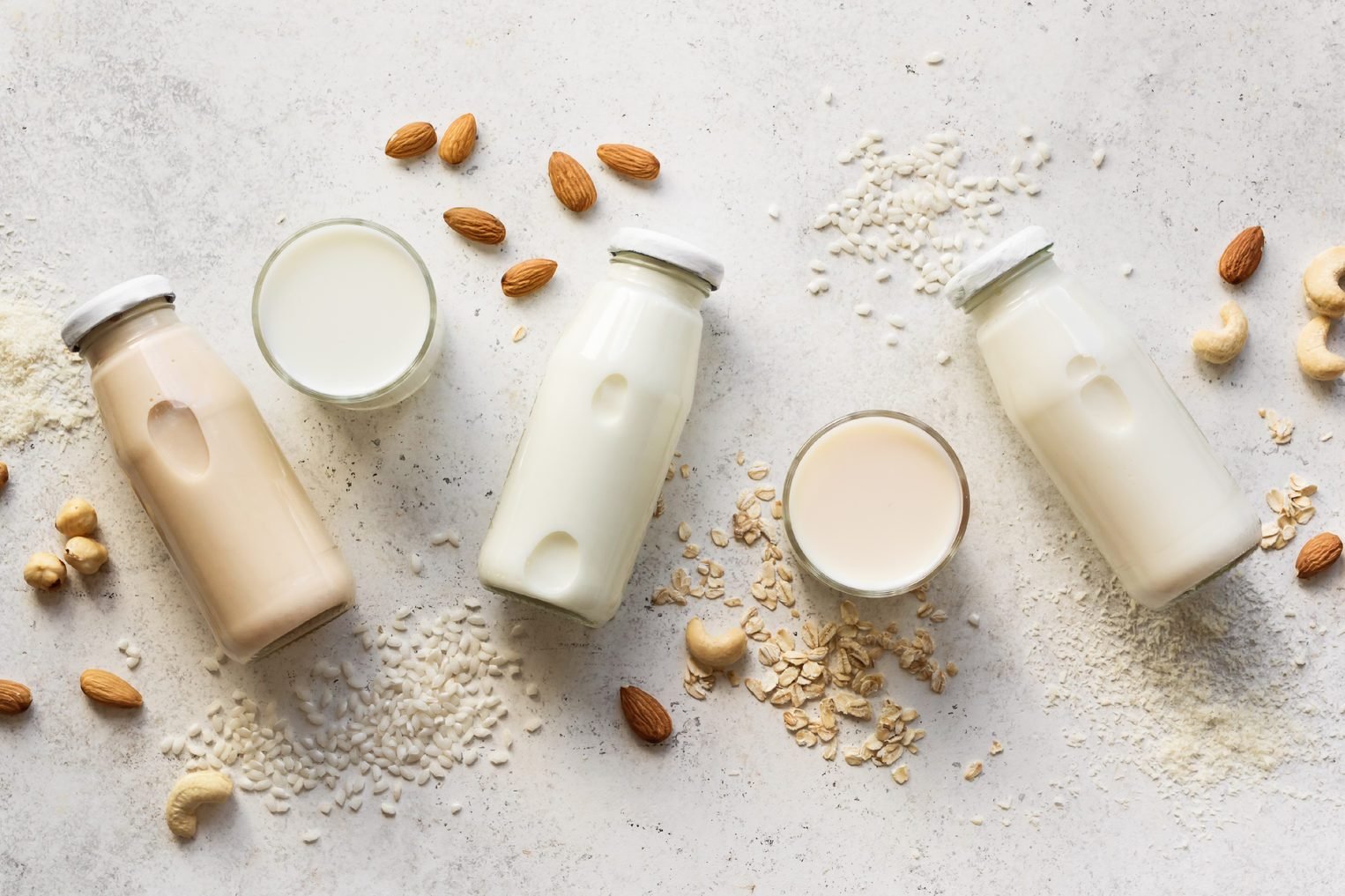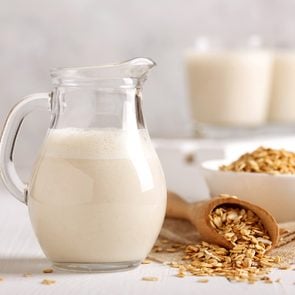What You Need to Know About Plant-Based Milk
Updated: Mar. 17, 2022
From oat to almond, cashew to soy, there's a wide variety of plant-based milks. Here's a look at nondairy milk options and their nutrition benefits.
On This Page
The plant-based milk market
Whether it’s to pour on your cereal or sip before bedtime to induce sleep, milk can be a healthy, comforting staple for most diets.
But not everyone is interested in traditional cow’s milk. You may give up dairy for health or a personal reason. (Learn what happens to your body when you go on a dairy-free diet.)
With almond, oat, soy, and cashew milks lining the shelves of supermarkets everywhere, you have plenty of non-dairy options to choose from.
The plant-based milk market is expected to be a $21.5 billion industry in the United States by 2024, according to Research and Markets, a global marketing research firm. Sales of plant-based milks now make up 14 percent of the entire milk category, reports the Plant-Based Foods Association.
Here’s a look at why you might choose plant-based milk, some of the types of nondairy milk, their benefits, and how to make them.
(Also, check out how to start a plant-based diet.)
Who drinks plant-based milk?
Two-thirds of people who buy plant-based milk choose the alternative beverages because of taste, according to a report from research firm Statistica. Other people choose plant-based milk because they opt for a vegan or vegetarian lifestyle.
Many people avoid cow’s milk and other dairy because they are lactose intolerant. Your body uses an enzyme called lactase to break down lactose, a sugar found in milk and other dairy products. When you have lactose intolerance, you don’t make enough lactase, and your small intestine can’t digest all of the lactose from the milk or milk products you eat or drink.
About 65 percent of people have a lowered ability to digest lactose after their infant years, reports the National Institutes of Health U.S. National Library of Medicine.
Most people who are lactose intolerant can have some lactose without experiencing symptoms, according to the National Institute of Diabetes and Digestive and Kidney Diseases. Other lactose-intolerant people experience diarrhea, bloating, gas, and other digestive issues after having food or drinks that contain lactose. (Here are some other reasons you may have belly bloat.)
Being lactose intolerant is not the same as having a milk allergy. If you’re allergic to milk, it means you have an immune system disorder and are reacting usually to one of the proteins in milk, such as lactoglobulin, lactalbumin, casein, and whey.

Almond milk
The most popular plant-based milk is almond milk, according to statistics from research firm SPINS reported by Food Navigator.
There are a lot of almond milk health benefits: It’s low in calories, fat, and carbs. It’s lactose-free and high in vitamin E. Store-bought almond milk can be fortified with calcium and other nutrients.
If you want to make almond milk at home, all you need are a few simple ingredients, like raw almonds, water, vanilla, and maple syrup.
Oat milk
Oat milk, which has only been on the market a few years, is the second most popular plant-based milk.
Most oat milk is dairy-free, nut-free, and soy-free, so it can be a good choice for people who have those specific allergies.
However, not all oat milk is gluten-free. Oats are naturally gluten-free but there can be cross-contamination when they are grown near fields or processed in the same facility with grains that contain gluten. To be sure, check the label.
Store-bought oat milk often has added vitamins and minerals, flavoring, sugar, and preservatives.
To avoid those extras, you can make oat milk with hand-rolled oats, water, a blender, and a fine-mesh strainer.
Cashew milk
Cashews are heart-healthy nuts (or, technically, seeds) that are packed with nutrients. They’re rich in healthy fats, fiber, vitamins, and protein.
Many of those nutrients translate when cashews are turned into milk. And store-bought cashew milk is fortified with extra nutrients.
But you get more protein from the nuts when you make cashew milk at home. It’s easy to do and doesn’t require straining as many other homemade kinds of milk do.
Cashew milk is very versatile and can be used in many ways. Try it in smoothies, pasta sauce, soups, on cereal, or on granola or oatmeal.
(Learn the difference between cashew milk vs. almond milk.)
Soy milk
Made from nutrient-rich soy, it’s no surprise that soy milk is also packed with vitamins and other nutrients.
It’s the closest to dairy milk and has been used as a popular replacement for cow’s milk for more than four decades, according to a 2017 report in the Journal of Food Science and Technology.
Soy is one of the most common allergens, so obviously avoid soy milk if you are allergic.
(Here are the nutritional differences in soy milk vs. almond milk.)
Hemp milk
This option is made out of hemp seeds from the hemp plant. This is the same plant (Cannabis sativa) used to make marijuana and CBD (cannabidiol) products.
But hemp milk does not get you high because it may only contain trace amounts of delta-9-tetrahydrocannabinol (THC), the compound that can affect your mental state.
Other kinds of milk to try
That’s just the tip of the nondairy milk iceberg. You’ll find that there are plenty of different plant-based milks made from a wide variety of nuts and other plants:
Concerns about plant-based milk
Nondairy milk doesn’t have the same nutritional profiles as dairy milk. They may not have as much calcium or protein unless they are fortified. Always read the label. (These are the signs you’re not getting enough calcium.)
You may want to talk to your children’s doctor before switching them to plant-based milk if allergies or lactose intolerance aren’t an issue.
A 2017 study of more than 5,000 Canadian children, published in The American Journal of Clinical Nutrition, found that children who drank non-cow milk were shorter than those who drank exclusively cow’s milk. That means a three-year-old who drank three cups of non-cow milk a day would be 1.5 centimeters (about a half-inch) shorter than a three-year-old who drank the same amount of cow’s milk.
(Here’s why your child shouldn’t be drinking almond, soy, or rice milk.)



